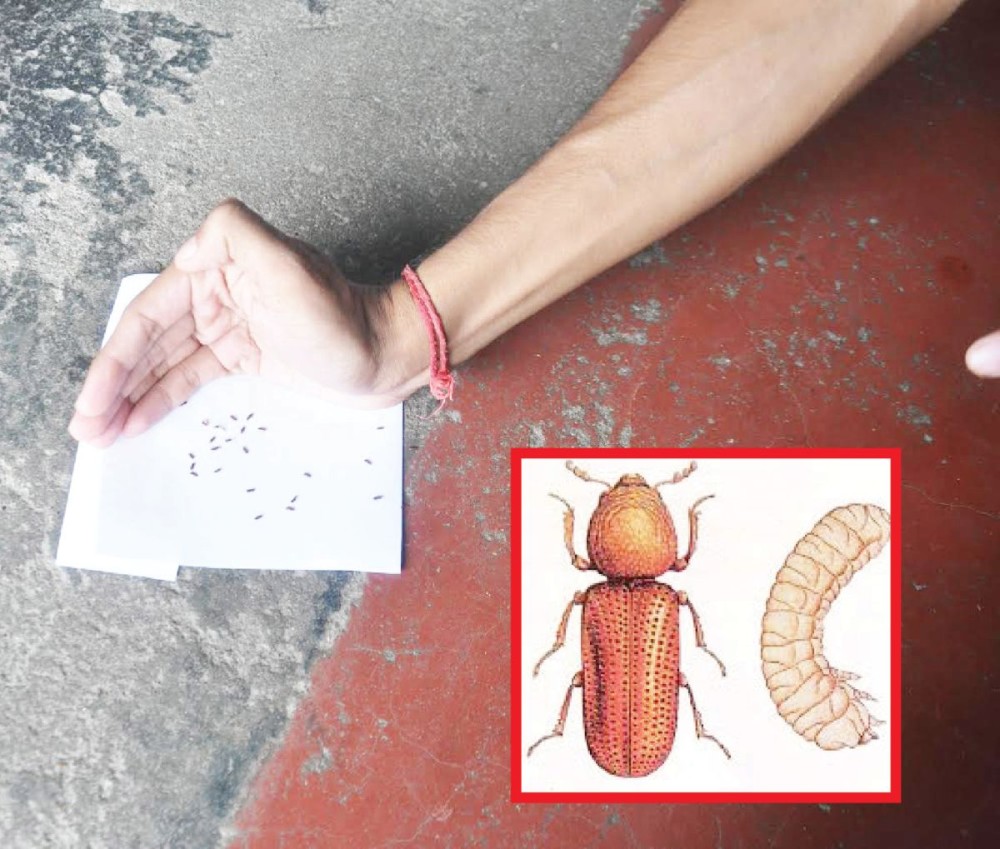‘Lesser grain borers’ which have been troubling residents of Kevijau colony, Sematila, Xuvihe, and adjoining areas in Dimapur.

Y Merina Chishi
Dimapur | September 17
Residents of Kevijau colony and adjoining areas are having a harrowing time with a new enemy. For the past one month, a reddish brown rice bugs have been invading their homes- attacking grains stored in containers and causing problems for the residents. Residents suspect the reason could be the grain storehouse belonging to the Food Corporation of India (FCI) located nearby.
These bugs have made their way into homes located in Kevijau colony, Sematila, Xuvihe and other adjoining areas. Those affected the most are people living close to the FCI storehouse and particularly on the ground floor of buildings. Residents in the area said they noticed the bugs coming in large numbers last month. “Every morning we sweep out a handful of those bugs from our house,” a lady said. These bugs are noticeable mostly after dusk. Another lady mentioned that these bugs crawl on their beds and other furniture raising fears that it could be dangerous if it enters their ears while sleeping.
A resident of Sematilla observed the bugs in her house in the month of August. She has found them crawling on walls, beds and carpets. She initially thought they were flees from a pet dog she owns but later discovered the bugs were present even in her neighbour’s house. “I have never seen rice bugs crawling around like this in such numbers,” she said.
Upon examination, officials from the Department of Agriculture have confirmed the bug to be a storage pest called ‘lesser grain borer’ (scientific name: Prostephanus truncates). The pest, they added, is not commonly found in Nagaland.
Lesser grain borer is one of the most injurious pests known to attack grains. Adults are mobile, able to fly and are long-lived. Females lay eggs one at a time or in batches of upto 30 eggs. It affects nearly all grains including seeds, dried fruit, cork, wood and paper products. The damages caused by this pest are distinctive and heavy. They feed on the embryo of the food grain thereby taking away all the nutrients present.
The officials pointed out that the increase in the pest around the storehouse could mean the food grains have been stored over a significant period of time. Other atmospheric factors like uncontrolled temperature and high moisture content could also be playing havoc. They suggested that ‘light-trap’ technique and smearing repellents like neem paste could help in preventing the bugs from entering homes. However, unless bigger measures to destroy the pests from the source are made, the numbers will only increase.






